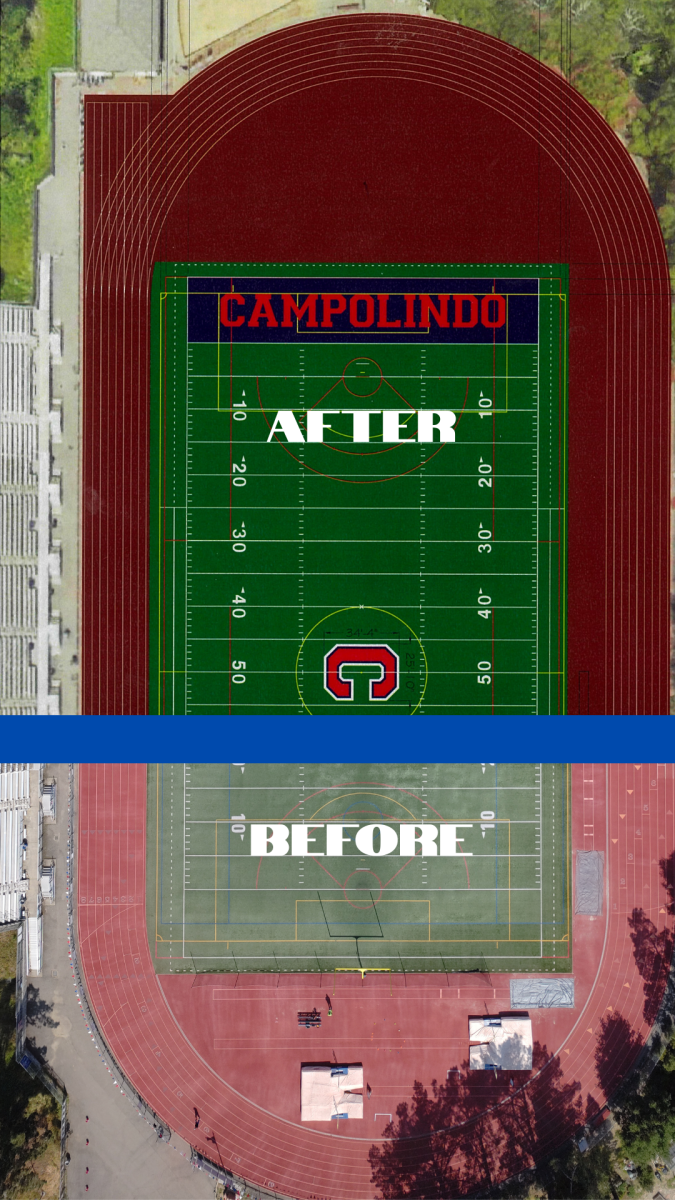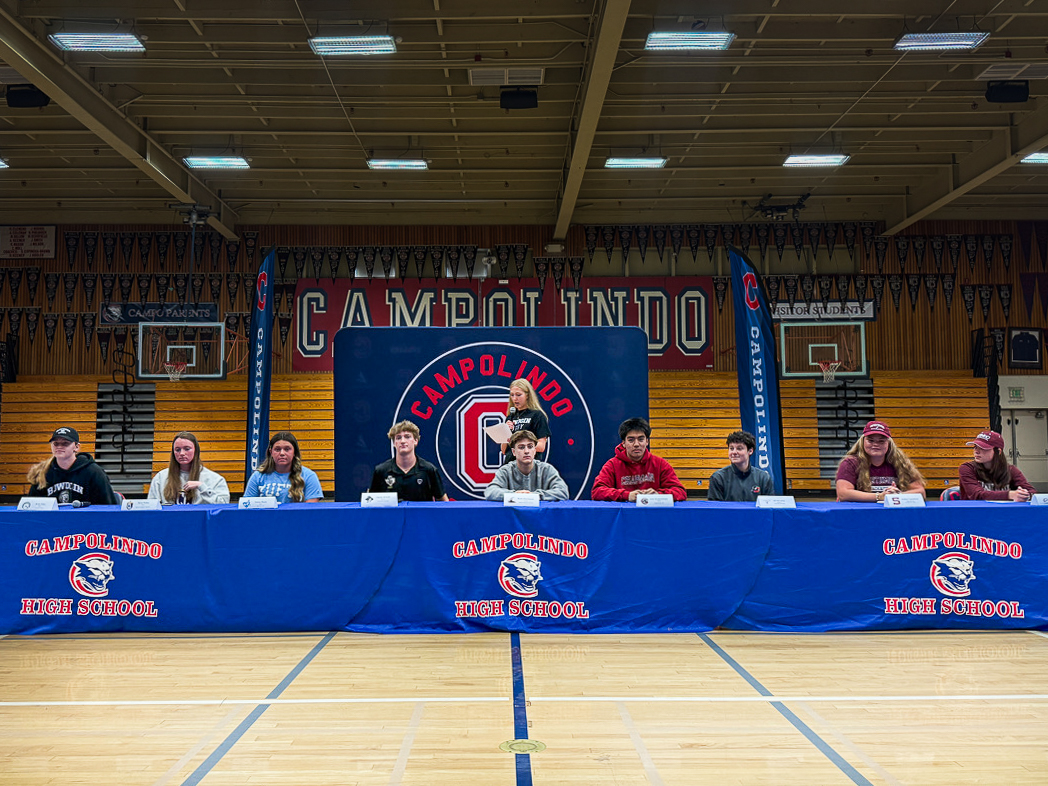First semester has come to a close, the North Coast Section (NCS) finals for every winter sport have ended, and the mornings are warmer with every passing day, ushering in a new season of sports and drawing us further under the grasp of the siren’s call of summer.
Although senior-itis is spreading like wildfire and concentration is slipping more and more as spring break approaches, many sophomore, junior, and senior student-athletes are re-sharpening their focus in response to National Collegiate Athletic Association (NCAA) recruitment.
For many high school athletes, spring signals the beginning of a critical time in both their academic and athletic career.
According to the NCAA official website, the NCAA was founded over 100 years ago in order to protect student athletes, emphasizing the importance of excellence in both athletics and academics. Divided into 3 different divisions (I, II, and III), the NCAA serves to promote integrity, maintain a level playing field for student athletes, provide guidelines for recruitment, and impose penalties for violations of such rules. Liable for the advancement of “equitable competition” and protection of the well being of over 400,000 student athletes, the NCAA is an organization that governs amateurism, recruiting, eligibility, benefits, financial aid, and playing and practice seasons for every division.
According to the official NCAA definition, recruiting is “any solicitation of prospective student-athletes or their parents by an institutional staff member or by a representative of the institution’s athletics interests for the purpose of securing a prospective student-athlete’s enrollment and ultimate participation in the institution’s intercollegiate athletics program.”
These forms of contact are important in securing a spot on a college team. The rules and time constraints on recruiting differ from sport to sport, and can change depending on the school’s division; however, quick and persistent attempts at communication with coaches are important and the consequences for breaking NCAA guidelines can be severe.
Certain periods of recruitment define when and how student-athletes may contact or be contacted by college coaches. If athletes are contacted during the “dead” period, during which they are ineligible for recruitment, or a face to face conversation with a player is attempted prior to the ending of the period in which only phone calls and emails can be exchanged, the coach may be liable and, if enough evidence is found to substantiate charges, a hearing in front of the NCAA enforcement staff will be held to determine the proper penalty for the infraction.
The recruitment process normally begins during the sophomore year for serious athletes, when they establish contact with college coaches. During this period, players are only allowed to contact coaches through email or phone calls, and coaches cannot initiate the contact, so the burden is on the athlete to advocate for themselves.
Most students establish contact by either filling out questionnaires on the colleges’ web sites or by emailing the coach, according to junior track and cross country runner Haley Shipway. Shipway has filled out several surveys and received letters from schools.
Sophomore baseball player Ben Skinner has received several letters, and so has junior water polo player Natalie Seidemann. Both Skinner and Seidemann have been members of varsity in their respective sport every year they have attended high school, and hope to continue playing in college.
Skinner learned about the recruitment process from his coach and other players on his team, such as college-bound athletes Brett Stephens, Robbie Tenerowizc, and Trent Shelton. He has played in showcase and club tournaments that college coaches have attended, and has emailed certain colleges with the help of his coach.
Seidemann has also been emailing coaches since her sophomore year. She has visited several colleges on unofficial visits in order to get to know the teams of certain schools and see the campuses. “It’s [the recruitment process] a little stressful, but it’s exciting to think about the future and what’s in store for me in college,” Seidemann said.
For team sports, such as soccer, more emphasis is placed on showcasing individual talent instead of whether or not the athlete is a good “team player.” Most soccer players make highlight videos or clips emphasizing play in a specific game, and create player profiles including GPA, academic and athletic achievements, and team accomplishments, in order to distinguish themselves, according to junior club soccer player Lauren Petite.
Player profiles are often passed out to college scouts at showcase tournaments. Junior club soccer player Emily Orwig emphasizes the importance of putting oneself on the radar of college coaches by attending these tournaments. “It’s important for coaches to get to see you on numerous occasions, so that they can decided whether or not they want to take you,” she said.
Identification camps are also an important way for players to be noticed. For instance, college campuses like Stanford offer track and field camps in the summer. Former Campolindo discus standout Eva Isaacs attended the Stanford camp and gained the attention of their coaching staff.
Individual initiative is very important in the recruiting process, according to senior swimmer Megan Bicomong and Petite. Bicomong emphasizes that success for prospective college athletes relies on establishing contact with coaches quickly and efficiently: “If they [college coaches] see that you’re doing the initial contact and that you’re interested, you’ll have a better chance.”
Petite also stresses the importance of showing interest and vigorous contact when soliciting a college coach. “A lot of it comes from the individual. You have to be proactive in contacting coaches of the schools you are interested in,” she said.
Usually at the beginning to middle of junior year, athletes are more actively recruited after being seen at tournaments or camps, or after they have sent information to the college coach, according to Petite.
While there are specific NCAA rules for recruitment, defining the period in which student-athletes and college coaches may communicate, the actual process varies by gender, sport, and sometimes even positions within certain sports. Normally players make verbal agreements when they are juniors and seniors, and sign in the spring of their senior year; however, in the case of certain outstanding individuals, some are recruited during sophomore, and even as early as freshman, year.
Although the recruitment process, potentially spanning over 3 years, is a demanding process, both physically and mentally, in the end, it can be rewarding. Bicomong received a scholarship in the beginning of her senior year and will be heading off for UCSB next fall.
For Bicomong, one of the biggest challenges was finding a school that fit her level of sport and academics; but now, after a consideration of her options, she is happy with her choice.

